The Dirillo river is a river in south-eastern Sicily in the province of Ragusa. Along its course numerous settlements have been found ranging from the prehistoric age, between the Neolithic and the Bronze Age, to the classical and late ancient Greek era; the oldest settlements are often found in open places that are not identifiable with natural fortresses, that is, they give the impression of a historical period without looming dangers for the populations, who did not need defenses from external threats.
"The Pirrone district occupies a good part of the left side of the middle river valley, about four km away. from Achates. The configuration of the place is that of a large and powerful plateau, about 200 m high. on the sea, plunging and looming, from the north-west side, with very rapid steps, over the river” (G. Di Stefano, 1983).
On this plateau in the middle Dirillo valley the faces of Stentinello (ancient Neolithic) and of Diana (late Neolithic), with conspicuous finds of lithic industry, as well as some burials from the Copper Age.
Some discoveries made in the basement of the Neolithic site are of exceptional interest to us: some worked pebbles that can be identified with two small female statuettes, and a violin-shaped betyl.
The three aniconic figures (two on pebbles, the other on soft stone) were found on the countryside level, but certainly in relation to an inhabited area whose development phase occurred between the moment of diffusion of advanced imprinted ceramics of the Kronio type II (XNUMXth millennium BC) and the late Neolithic phase of Diana (first half of the XNUMXth millennium BC); For these findings, at the moment, it is not easy to find adequate comparisons.
The three idols surprise with their extreme schematization.
"The statuette «A» (fig.1) it has a fusiform appearance, with turned surfaces, characterized by a two-dimensional schematism and a completely abstract sense of the human figure. The antero-distal region is just flattened above, while the antero-inferior part, asymmetric and protruding, coincides with the mass of the gluteal muscles. The anterior summit part is engraved, at the height of the face, by two groups of segment segments, which form an irregular square, coinciding with the contours of the face. The upper limbs are indicated with two light serrations in the central and most tapered point of the pebble and, perhaps, are represented in the position adhering to the body and belly” (G. Di Stefano, 1983).
If the pair of grooves on each side, which highlight the hips, can be interpreted as a sketch of arms adhering to the body, the square engraved on the head remains of uncertain interpretation.
The statuette «B» (fig. 2), smaller than the previous one, is made from soft calcarenite and is carefully crafted, almost closer to reality despite its schematism, with a slimming of the sides and two protuberances on the sides, in imitation of the arm. The graft of the broken head is noted, but there is no indication of the upper part of the trunk, the breasts and the chest. “The belly is accentuated, the navel (or vulva?) is strongly marked with a vertical line. The subventral fold, slightly accentuated, is lost at the base of the statuette” (G. Di Stefano, 1983). The lower limbs are not represented and the pebble appears to have been cut below the waist.
The third figurine, like the first obtained from a rather smooth river pebble, has a workmanship on the sides to reveal the two appendages of the arms and, like the previous one, has no head. According to Di Stefano it is a real lithic betyl in the shape of a violin, similar to those of the Cycladic tradition (fig. 3).
The statuettes, especially the first two, may recall - in part - those of Cozzo Busone and Di Stefano considers them products of a Paleolithic tradition still alive in the neo-Eneolithic age. An accurate chrono-typological definition of the statuettes, however, appears problematic, given that they were found in a disturbed deposit and that the settlement occupied such a broad chronological span.
The structural characteristics and the modest decorative graphics of Pirrone's lithic figurines could lead them to be interpreted as a translation - on another type of support - of the type of the clay female figurine of the Piano Vento and Milena groups, of which the posture and system of representation are repeated of the body. It could, therefore, be a production limited only to the territory of south-eastern Sicily or perhaps linked to symbolic constraints, the meaning of which however escapes us.
These anthropomorphic female figurines seem relevant to domestic contexts; we can therefore hypothesize that they had a predominantly domestic job, in close relation with cult activities linked to the family sphere.
Other findings – like the Venuses of Busonè – are instead linked to the funerary sphere or ritual contexts. Among the other finds in the area, we highlight as particularly interesting one made along the ridge where the village furnishings slid: a long-necked flask in dark clay, missing the base and the handle and decorated with engraved lozenge engravings filled with white paste both on the body and on the neck representing - probably - eyes, attributable to the Stentinellian vascular typology (fig. 4).
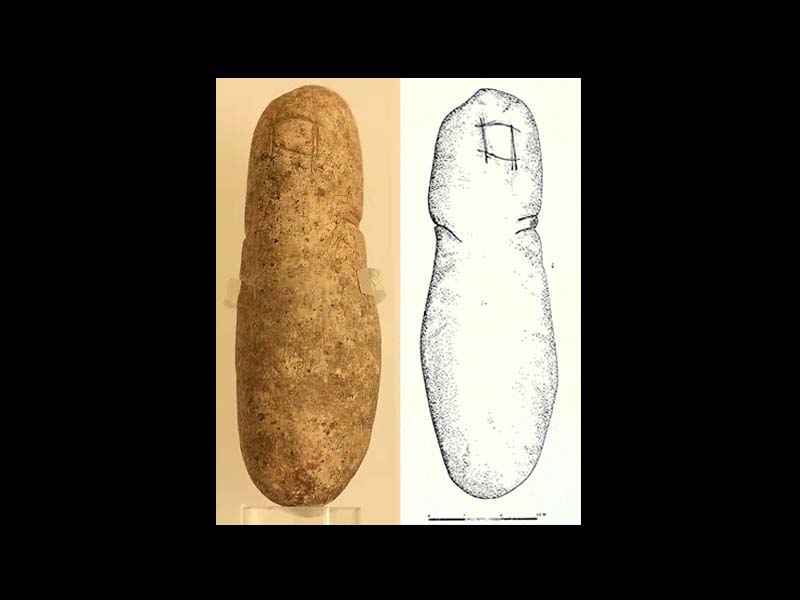
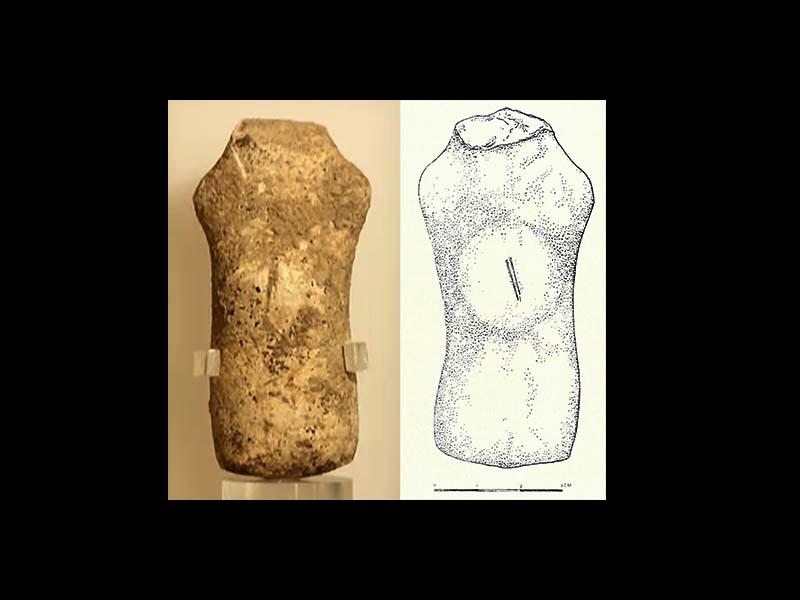
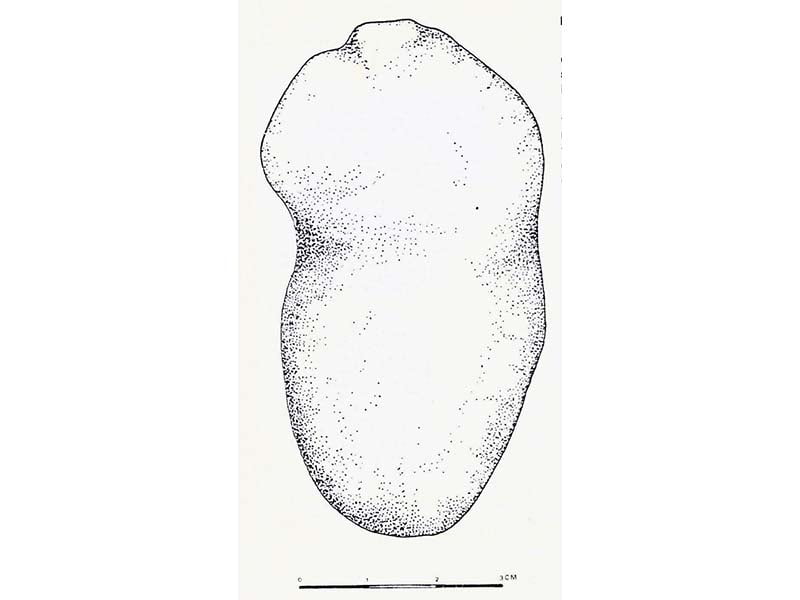
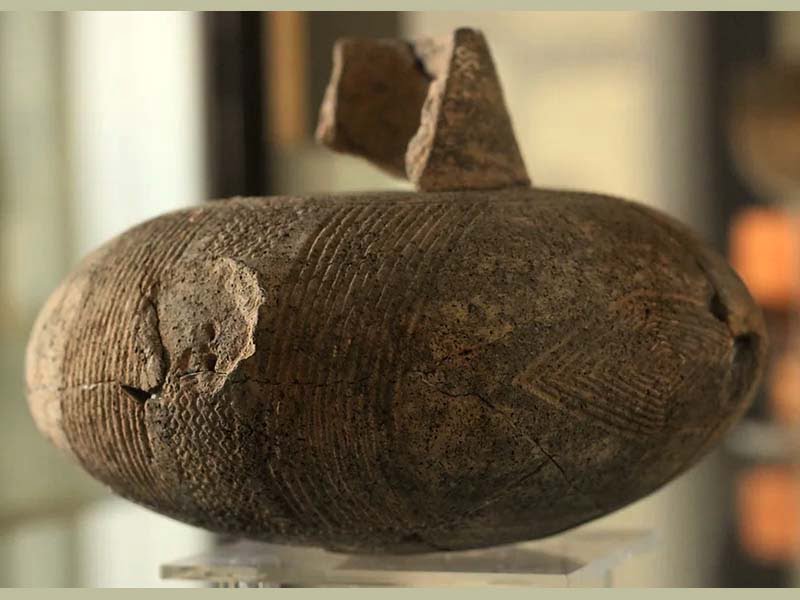
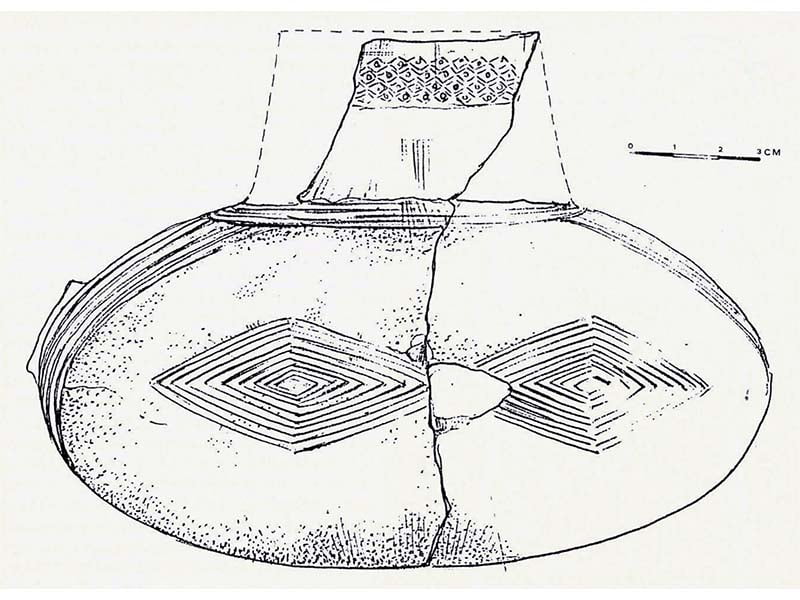
Historical notes
In 1930, Ippolito Cafici excavated, on the apex of the Iblean massif in the Calaforno fiefdom, an oval pit lined with lithic slabs attributed to the Stentinellian facies, a rare confirmed example of a burial belonging to the Sicilian Neolithic horizon. Between 1975 and 1978 the Superintendency of Antiquities for Eastern Sicily carried out archaeological research along the course of the Dirillo river and on the plateaus adjacent to the valley, with regular excavations in Neolithic and Bronze Age, Archaic-Classic, Hellenistic and late ancient.
The northern reaches of Pirrone are known for the discoveries of a significant lithic industry and some burials from the Copper Age. Downstream from the district there are known remains of the lithic industry and findings of Greek black and achromatic painted ceramics from the XNUMXth, XNUMXth and XNUMXst centuries. BC, pertaining, perhaps, to a small caravan village or to a parking place along the internal Agrigento-Syracuse road. Other clay fragments referable to faces of Stentinello were found in the nearby district of Poggio Bidini and, along the southern course of the Dirillo, in the Tatappì and Pantanelli districts. On the opposite side of the valley we have sites of prehistoric settlements (Neolithic and ancient bronze) and a Greek-archaic, Hellenistic and Roman site perhaps to be identified with the Ciceronian Bidis: a citadel active since the archaic age (like those of Scornavacche, Fossarotonda, of Acrillae and Pirrone), a true sentinel on the Dirillo ford, where the road, having crossed the river, headed towards the Geloi fields.
CARD
LATEST PUBLISHED TEXTS
VISIT THE FACTSHEETS BY OBJECT

